Why do I have a bump on my mouth inside the cheek? (pictures)
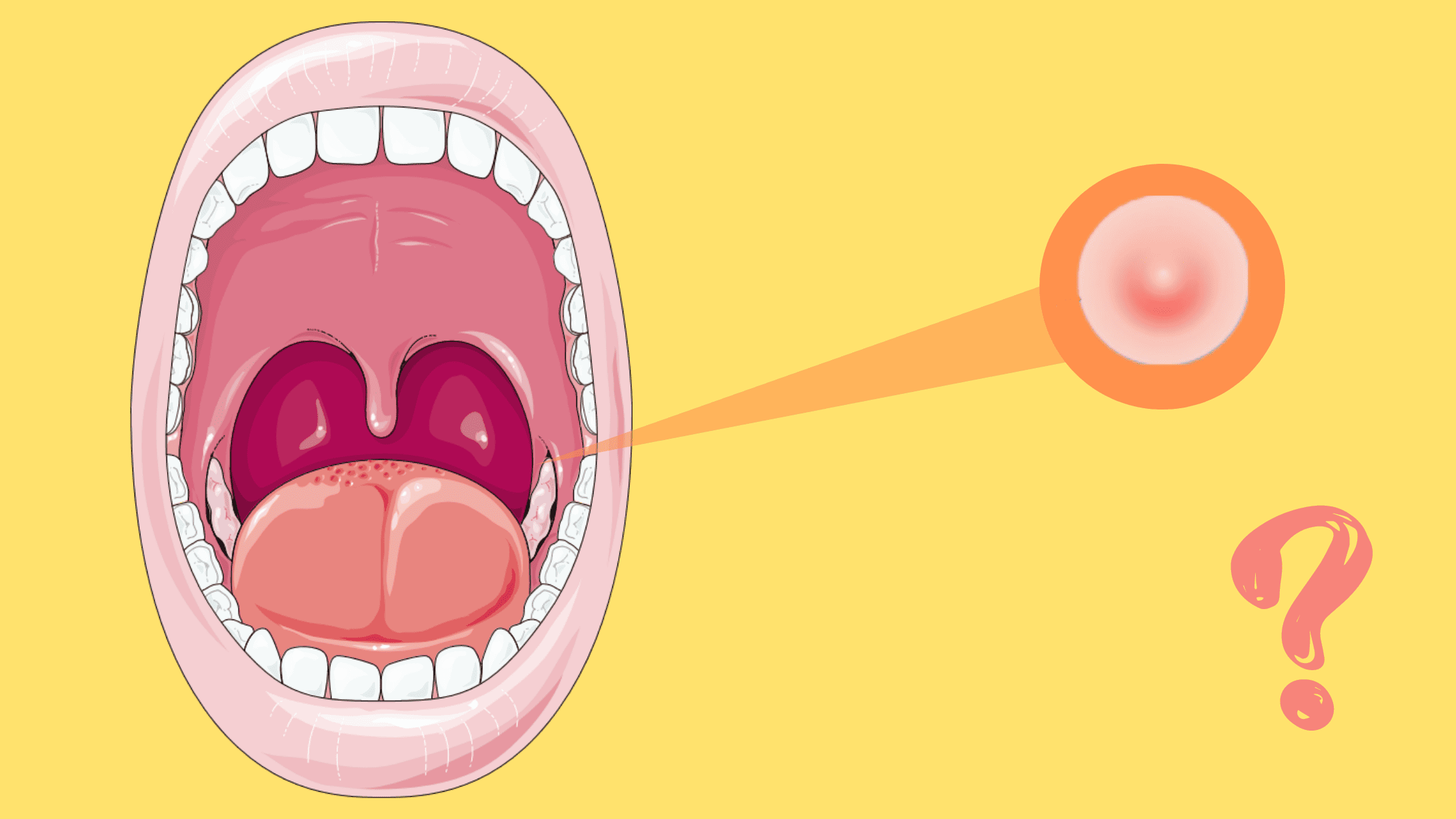 If you've recently noticed a bump on the inside of your cheek, you might be wondering what it is and what you should do about it.
If you've recently noticed a bump on the inside of your cheek, you might be wondering what it is and what you should do about it.
In this article, we'll provide you with the information you need to identify the bump and give you guidance on what steps to take next.
Please keep in mind that while most bumps in the mouth are harmless, it's always a good idea to see a dentist or healthcare professional if you notice one. Only they can give you an accurate diagnosis and recommend an appropriate treatment plan.
In this article:
1. What can a bump on the mouth, inside the cheek mean?
2. Why are bumps more likely to form on the inside of cheeks?
3. Symptoms that may cause concern
4. Factors that promote and worsen mouth bumps
5. How to deal with a bump in the mouth?
What can a bump on the mouth, inside the cheek mean?
If you notice a bump on the inside of your cheek, there's no need to worry too much. Most of them are benign and nothing to worry about.While certain symptoms may give you a clue, it's impossible to know exactly what it is without a microscopic examination. Here are some of the most common lumpy mouth lesions:
1. You have a single non-painful bump on your cheek
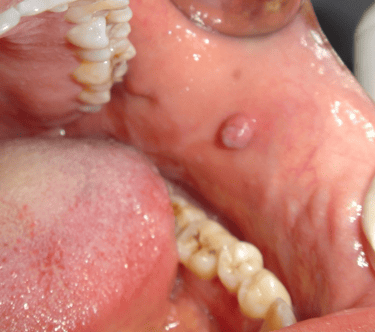
This type of lesion is relatively common in the mouth, and most often appears as a result of ongoing, long-term irritation from ill-fitting dentures or repetitive injury to an area of the cheek.
We call them fibrous overgrowth because they result from the benign proliferation of fibroblast cells with the synthesis of a large amount of collagen fiber. The medical term for these benign tumors is Fibroma.
They appear as a single mass, between 1 and 2 centimeters in size, which may be firm or soft to the touch. They can be attached to a part of your mouth by their base or a stem.
Its surface is usually smooth and has the same color as the surrounding tissue, but it can sometimes be inflamed and turn white or red due to injury. Fibromas are not and never turn into cancer.
In rare cases, the lump may bleed easily when touched. When this happens, the growth is made up primarily of blood vessels and rapidly grows to about half an inch in size. They are often found in pregnant women because of hormonal changes.
2. You have a soft, blister-like lump
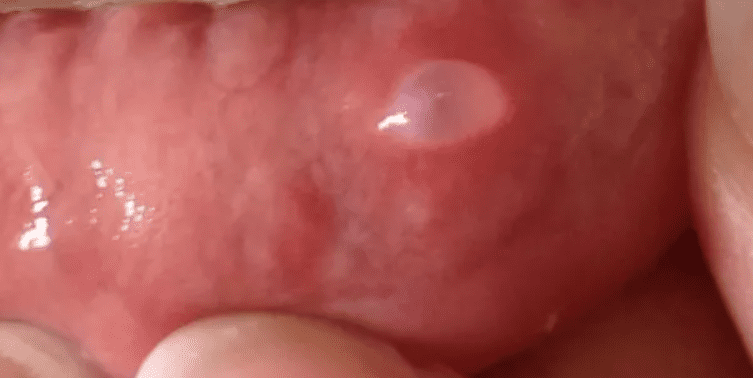
The appearance of a soft, fluid-filled, and clear or bluish lump at any site in your mouth, especially on the inside of the lower lip, commonly indicates a condition called mucoceles or mucoid cysts. Along with fibromas, they are one of the most common growths of the mouth (affecting around 2.4 out of every 1,000 people).
The salivary glands are connected to the mouth surface by ducts that release saliva. When injured, saliva becomes trapped in the inner layer of your mouth. A painful swelling may appear, ranging from a few millimeters to a few centimeters.
3. You have multiple blister-like lesions and painful ulcerations
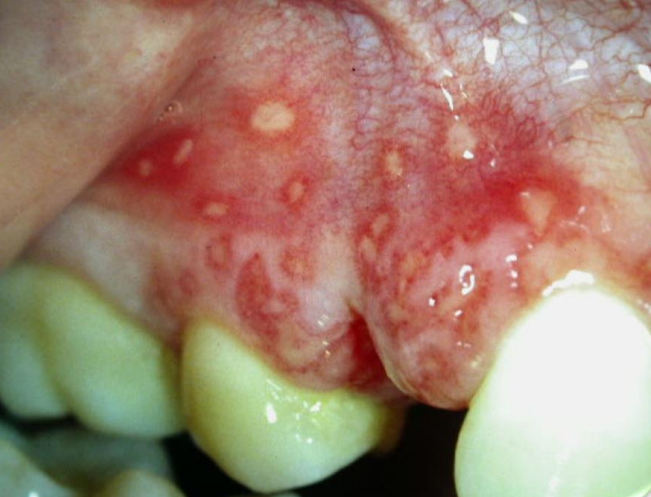
The appearance of multiple, painful, blister-like lesions may indicate a viral infection such as the herpes simplex virus and varicella-zoster virus. They cause blisters to appear in different mouth sites, including the lips, inside of cheeks, and gums. These blisters will break off to leave painful ulcers.
Other conditions that can cause blister lesions are mucosal pemphigoid and pemphigus. These are autoimmune diseases in which the body attacks its own cells.
4. You have a painless lump with a cauliflower-like surface
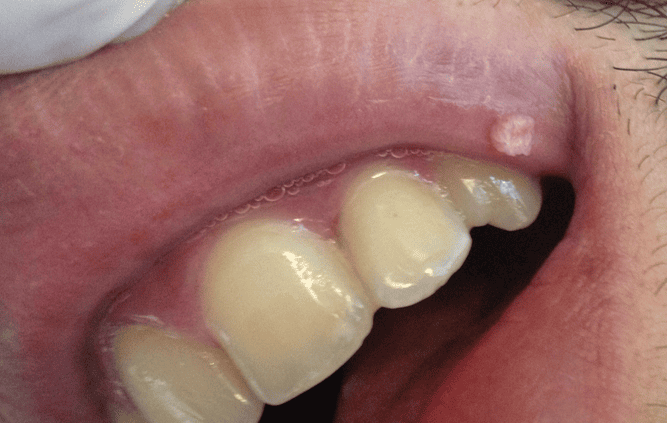
This type of lesion is not uncommon and appears most often inside the cheeks, the gum, and the lips.
They are associated with the human papillomavirus (HPV) which causes single or multiple bumps to appear on the lining of the mouth. They are often painless and have a rapid growth rate that stops when they reach the size of about one centimeter. They are covered with a pink or white layer with a striated surface similar to that of a cauliflower.
These oral lesions develop as a result of the transmission of HPV through the mouth.
5. Your cheek is swollen from the outside
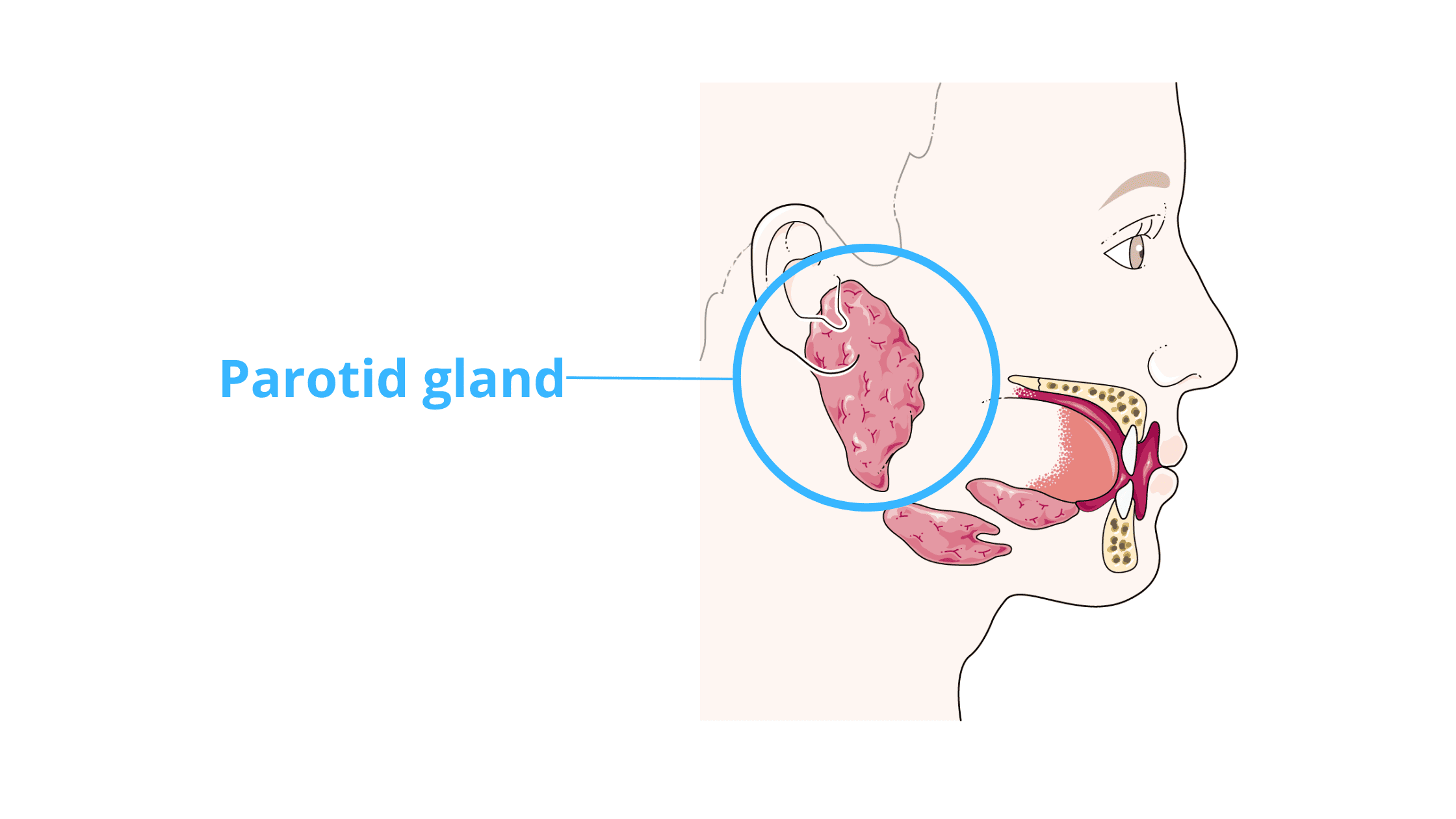
Swelling inside your cheek with a covering layer similar to the surrounding tissue may indicate a benign salivary gland tumor. The most common one is called a Pleomorphic Adenoma, which appears as a firm mass, ranging from a few millimeters to several centimeters, and grows slowly without causing pain.
These benign tumors usually happen in the parotid gland. If that's the case, the swelling might show up on the outside of your mouth.
Even though the likelihood of it becoming cancerous is low, it's a good idea to visit your healthcare professional. They can examine your gland to see whether a treatment may be necessary.
Why are bumps more likely to form on the inside of cheeks?
The inside of your cheek is lined with delicate tissue that's more susceptible to irritation and injury than the tougher skin on the outside.This can lead to the formation of sores, lumps, or bumps when the tissue reacts to the irritation.
The medical term for each type of bump is derived from the original tissue that gave rise to it. Again, only a microscopic examination can identify the true nature of these lesions.
Fortunately, most bumps that form inside the mouth are benign and don't pose a threat to your health. They tend to remain in the area where they first appear for a long time and grow slowly without invading the surrounding tissue.
Many factors can make bumps in your mouth. The main reason is the constant irritation, but other things can be involved too, like:
- Infections from viruses and bacteria.
- Exposure to certain substances like tobacco and alcohol.
- Rarely, malignant growth (oral cancer).
A lump in the mouth can have different origins
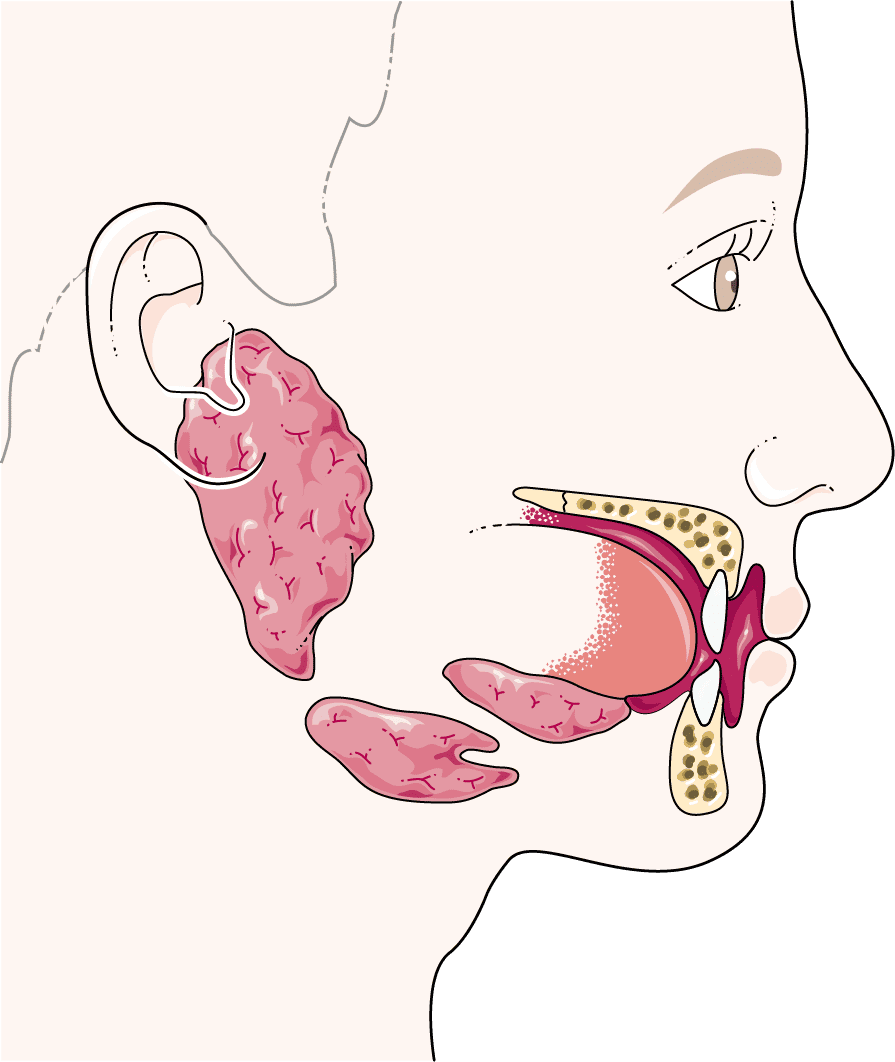
There are different organs and tissues on the cheeks, including the salivary glands, the mucosa that covers the inner part of the mouth, as well as nerve, vascular and fatty tissues. So, bumps that appear in this area could have different origins.
Symptoms that may cause concern
While most lumps inside the mouth are harmless and don't have any cancerous potential, some oral lesions can be dangerous and have a significant risk of becoming malignant.One common symptom to watch out for is the appearance of white patches in various parts of your mouth. These spots may indicate a pre-cancerous condition known as Leukoplakia. It can affect any part of the mouth, but the most common are the tongue, the inside of the cheeks, and the lower lip.
These white patches are firmly attached to the oral mucosa and cannot be rubbed off.
Other symptoms to watch out for include:
- Swollen neck nodes: Swollen lymph nodes in the neck often indicate inflammation or infection. They appear as small balls in the neck or under the lower jaw. In extreme cases, they can be a sign of oral cancer.
- Persistent pain: A continuous pain when swallowing or chewing that lasts more than 15 days should lead you to consult your dentist. They will do a thorough examination to identify the cause and treat it.
- Difficulty swallowing: This may also be accompanied by a sensation of something stuck in the throat or persistent hoarseness. If it persists, it may be a sign of malignancy in the throat area.
- Bleeding and numbness in the mouth: Unexplained and repeated bleeding in the mouth, such as from the gums, tongue, or cheeks, should be taken seriously and checked by a dentist. Additionally, persistent numbness or loss of feeling in any part of the mouth can be a warning sign of oral cancer.
Factors that promote and worsen mouth lesions
Many factors can significantly increase the risk of developing lumpy mouth lesions and worsening them. The combination of these factors with genetics makes some people more vulnerable. Among these factors:- Smoking: Tobacco contains a large number of carcinogens and toxins that can affect the oral mucosa. Smoking also increases the temperature of the mouth, which can irritate it.
- Alcohol: Alcohol has a synergistic effect with tobacco. People who smoke and drink at the same time have a 35 times higher risk of developing oral cancer.
- Infections: Some viral infections such as herpes virus, human papillomavirus, and HIV increase the risk of oral lesions.
- Hormonal imbalance: Some hormonal conditions can affect the mouth resulting in red, swollen, and bleeding gums, swollen salivary glands, and the development of canker sores.
- Chronic irritation: Repeated and long-lasting mouth irritation from ill-fitting dentures, biting your cheeks, or hot and spicy foods can injure your mouth tissues.
- Nutritional deficiency: The deficiency of certain nutrients, especially vitamins A, C, and B-complex, can be associated with certain mouth lesions.
How to deal with a bump in the mouth?
Bumps or pimples that appear in the mouth are usually harmless. They develop slowly, do not damage surrounding tissue, and are not life-threatening.Some more serious, but fortunately rare, conditions may appear early as a bump or ulceration. If your mouth lesion does not heal after 10 days, to clear up any doubts see your dentist. He will assess the lesions and may refer you to an orofacial specialist for further examination.
Do not attempt to remove or scrape the mouth lump at home as this may aggravate the lesion and cause an infection.
Once diagnosed, treatment usually involves surgical excision. Risk factors such as infection, smoking, or chronic irritation must be eliminated or treated to prevent a recurrence.
Sources
- What is oral (irritated) fibroma? https://dermnetnz.org/topics/oral-irritated-fibroma
- A Color Handbook of Oral Medicine - Richard C. K. Jordan, Michael A. O. Lewis
- Papillome buccal/Condylomeacuminé/Verrue vulgaire http://dermatologiebuccale-nice.fr
- “Parts of the figure were drawn by using pictures from Servier Medical Art. Servier Medical Art by Servier is licensed under a Creative Commons Attribution 3.0 Unported License (https://creativecommons.org/licenses/by/3.0/).”
